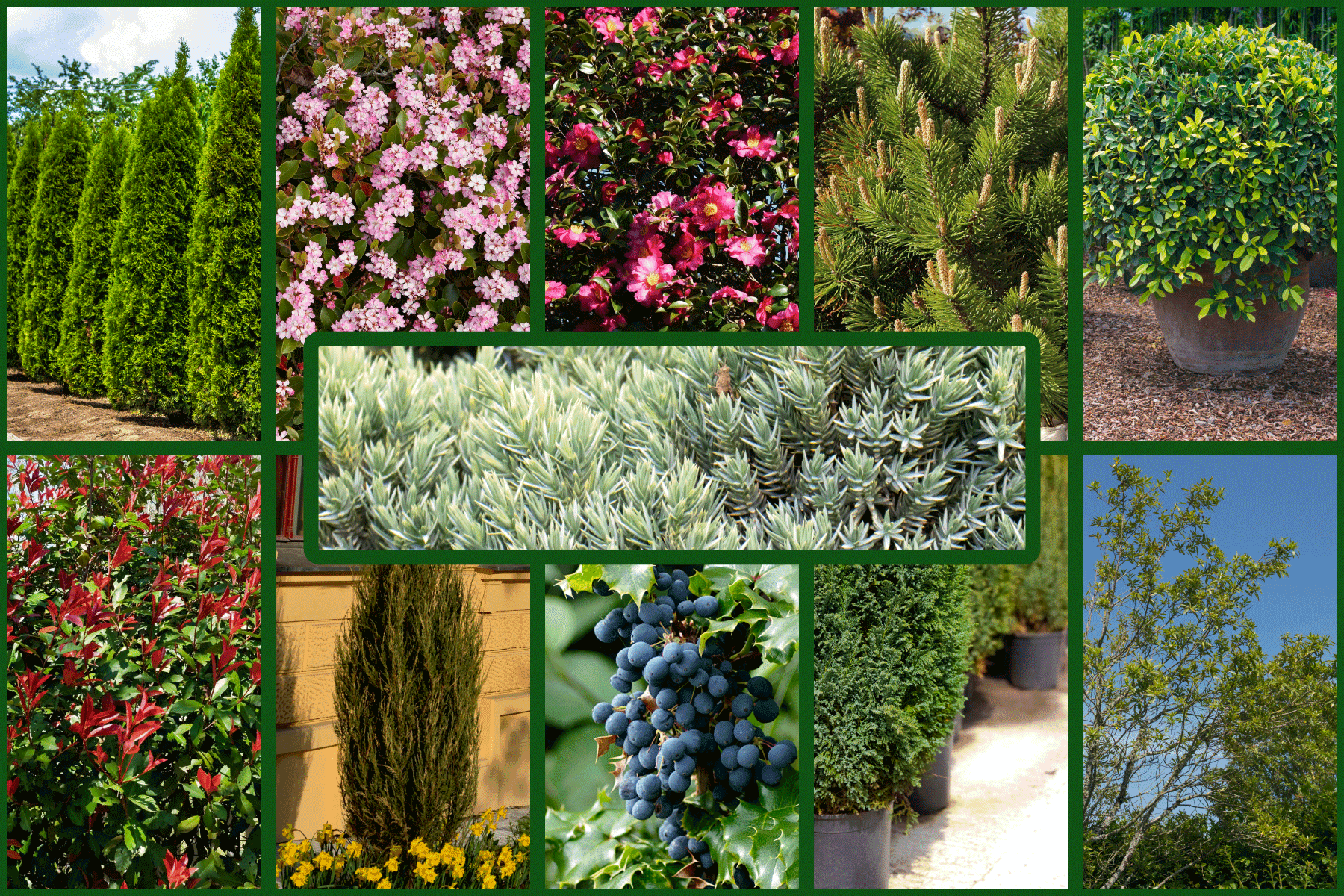This article was reviewed by Steve Snedeker, professional landscaper.
Whether you are a beginner or an explorer in ornamental shrubs, the non-invasive root is the safer alternative. So, we collected aesthetic yet functional shrubs even in the cold season to help you decide what you can plant near your house.
If you want a manageable landscape and less stress in your planting journey, here are evergreen shrubs with non-invasive roots:
- Arborvitae
- California bay laurel
- False cypress
- Florida hobblebush
- Mugo pine
- Oregon grape
- Red tip photinia
- Sasanqua camellia
- Skyrocket juniper
- Southern wax myrtle
- Yellow anise
In this post, we have a detailed discussion of their characteristics and care guide. We'll also explore other related topics, such as the noninvasive roots and foliage cycle. So, please keep on reading to learn more.
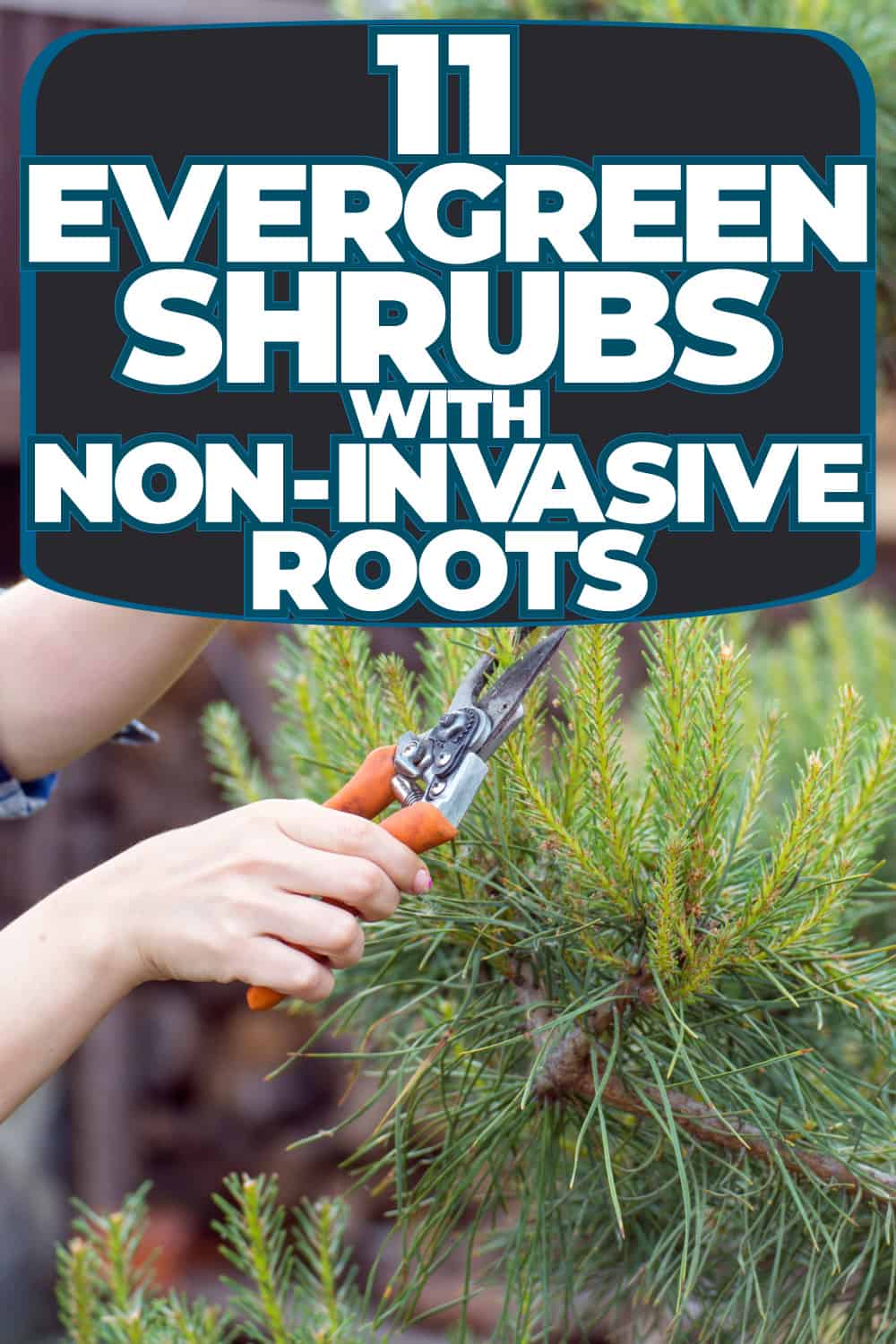
11 Evergreen Shrubs
Below is a broad selection of shrubs with a non-aggressive root system:
1. Arborvitae (Thuja)
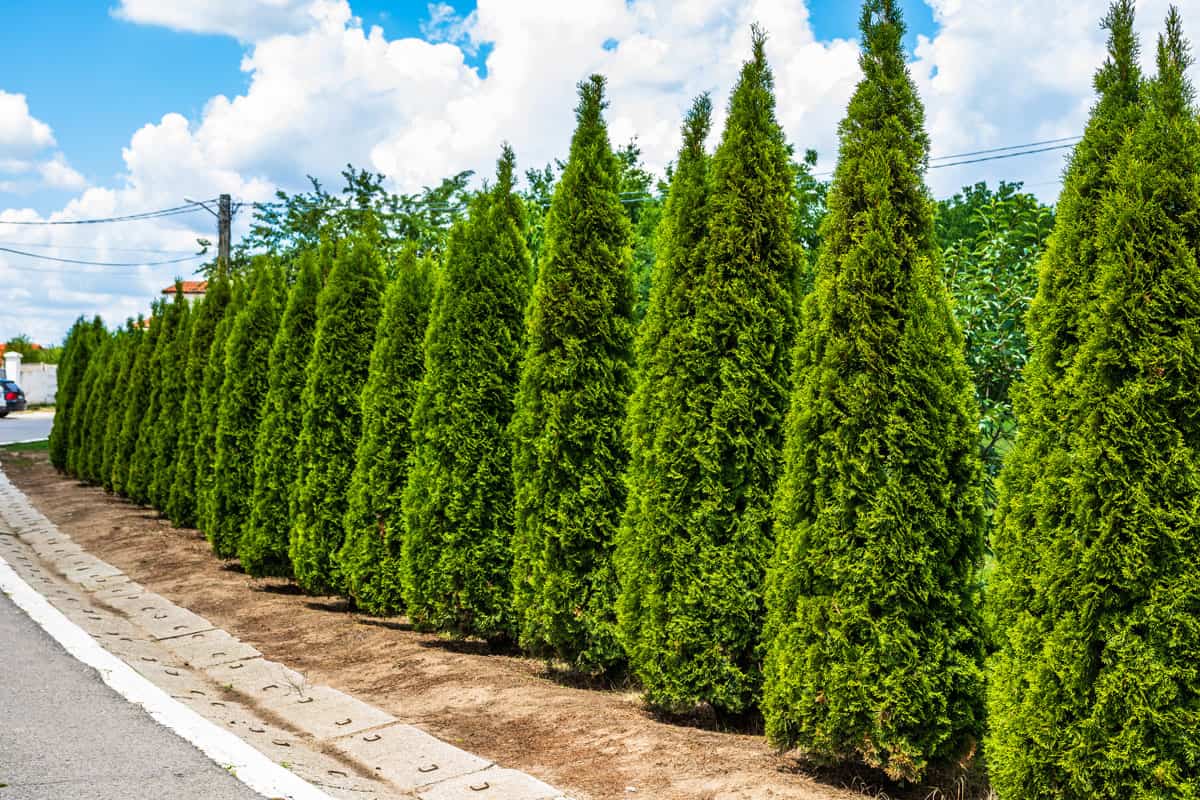
This genus includes different species: eastern arborvitae (Thuja occidentalis) and western red cedar (Thuja plicata), to name a few. Both are lush and dense.
If you want to form a hedge or fence, allot 3 to 4 feet interval between these shrubs. Similarly, you can shape them into spherical, tapered, or pendulous.
The fast-growing arborvitae requires less fertilizer and infrequent pruning, making them low-maintaining. However, get rid of the snow before build-up when winter comes.
- Height and Spread: 3 to 70 feet tall and 25 feet wide
- Soil Condition: Well-draining, moist
- Light Exposure: Full sun
- USDA Hardiness Zones: 2 to 8
Click here to see this emerald green arborvitae on Amazon.
2. California Bay Laurel (Umbellularia californica)
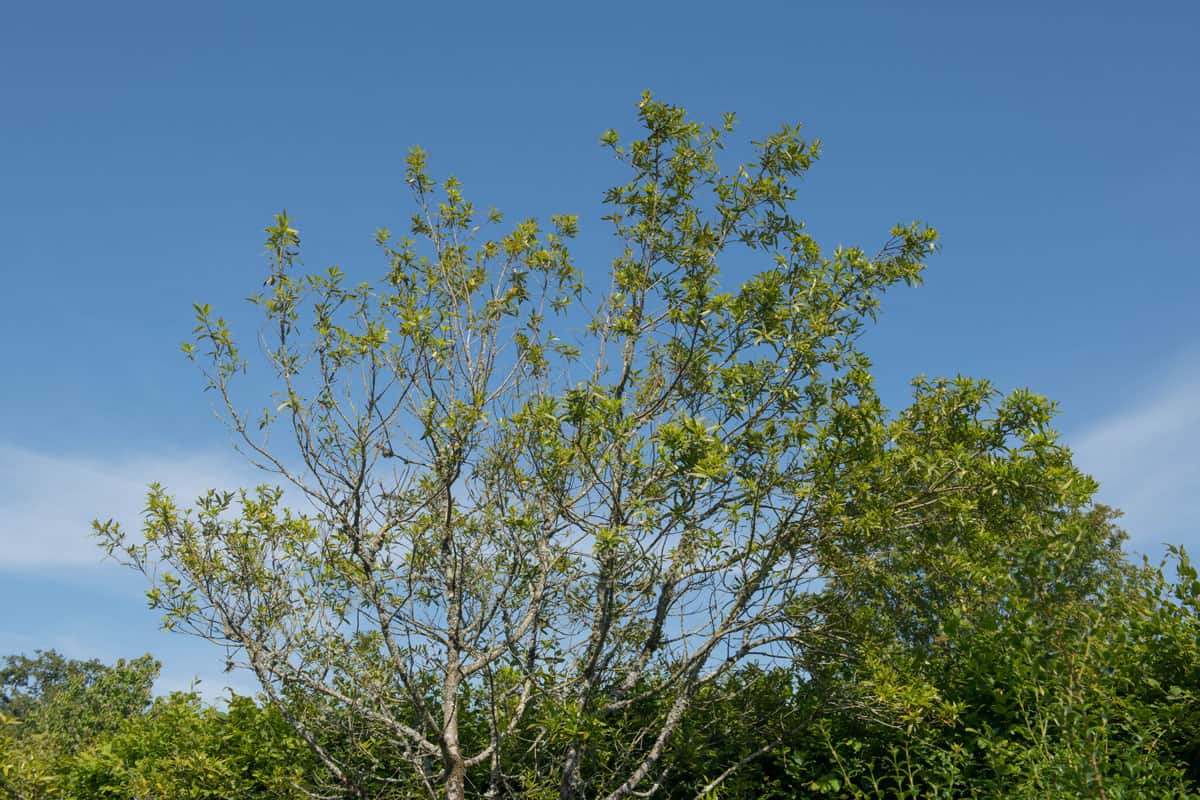
Whether rounded or upright, this shrub has yellow-green clustered flowers throughout the year or during spring. Unlike the Mediterranean bay laurel, it is endemic to Southern Oregon. Its leaves have a sharper flavor than the former.
The high-quality laurelwood is ideal for cabinetry and paneling, whereas the aromatic bay leaves are convenient for cooking and reducing head lice and wood rats. Despite its benefits, it is prone to heart rot.
- Height and Spread: 6 to 60 feet tall and 3 to 30 feet wide
- Soil Condition: Fertile, regular irrigation
- Light Exposure: Full sun to part shade
- USDA Hardiness Zones: 7 to 9
3. False Cypress (Chamaecyparis)
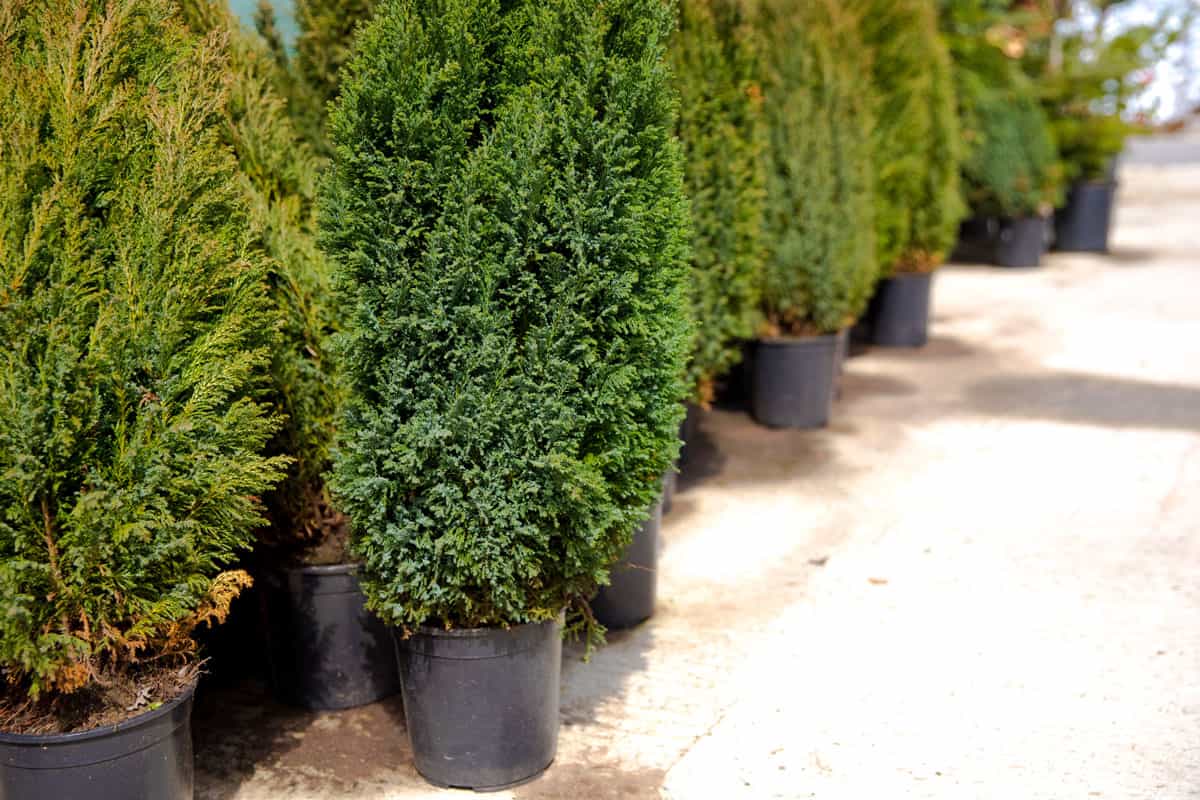
Another dense pyramidal shrub is the false cypress, a conifer related to cypresses. Although it has discreet fruits and flowers, it is an ideal pest-resistant and ornamental plant.
Similarly, out of the six species, the lawsonia, obtusa, pisifera, and thyoides bring an excellent view to your house regardless if they are bonsai or dwarf versions.
Nonetheless, it serves as an essential timber in North America. Manufacturers widely use its hardwood for fences, furniture, and boats.
- Height and Spread: 25 to 35 feet tall and 20 to 30 feet wide
- Soil Condition: Acidic, clay or loam
- Light Exposure: Part shade or sun
- USDA Hardiness Zones: 5 to 8
Click here to see this young blue false cypress on Amazon.
4. Florida Hobblebush (Agarista populifolia)
Hobblebush has arching multi-stems and fragrant white blossoms from spring until summer. Likewise, it is a versatile plant for streams, borders, and slopes. It can also resist seasonal downpours and disease and deer problems.
One of its features attracts animals such as birds, bees, and butterflies. However, its reddish-green leaves are hazardous when you eat them.
- Height and Spread: 8 to 12 feet tall and 5 to 6 feet wide
- Soil Condition: acidic, moist
- Light Exposure: part or full shade
- USDA Hardiness Zones: 7 to 9
5. Mugo Pine (Pinus mugo)
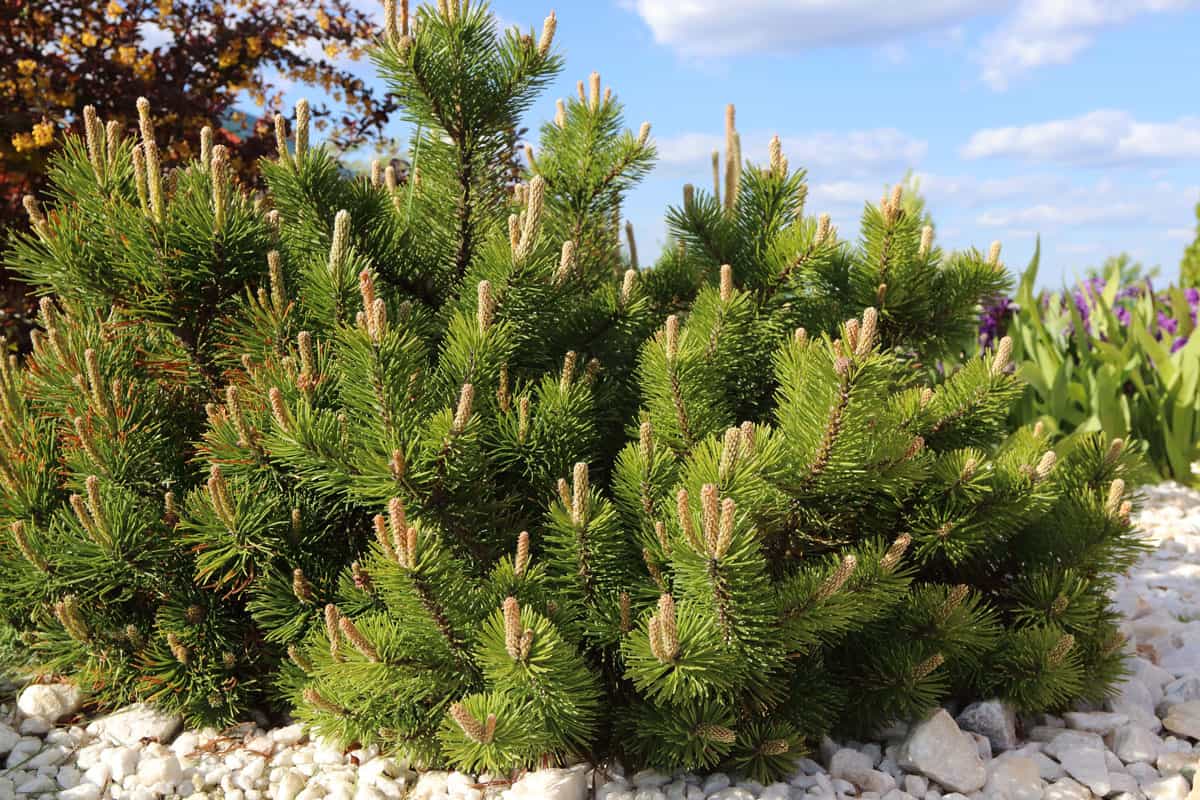
Although it is widely prevalent in the European mountains, plant enthusiasts usually cultivate the dwarf mugo. Aside from the needle-like leaves, this conifer also forms light-colored shoots at its apex.
Despite its slow growth, it withstands drought and winter burn. As a result, it functions as pinecone syrup, animal shelters, windbreaks, erosion control systems, and foundation landscaping. Meanwhile, it produces the oil of turpentine.
- Height and Spread: 20 feet tall and 25 feet wide
- Soil Condition: Alkaline or acidic, sandy or loamy
- Light Exposure: Direct sun and part shade
- USDA Hardiness Zones: 2 to 7
Click here to see this dwarf mugo pine on Amazon.
6. Oregon Grape (Berberis aquifolium)
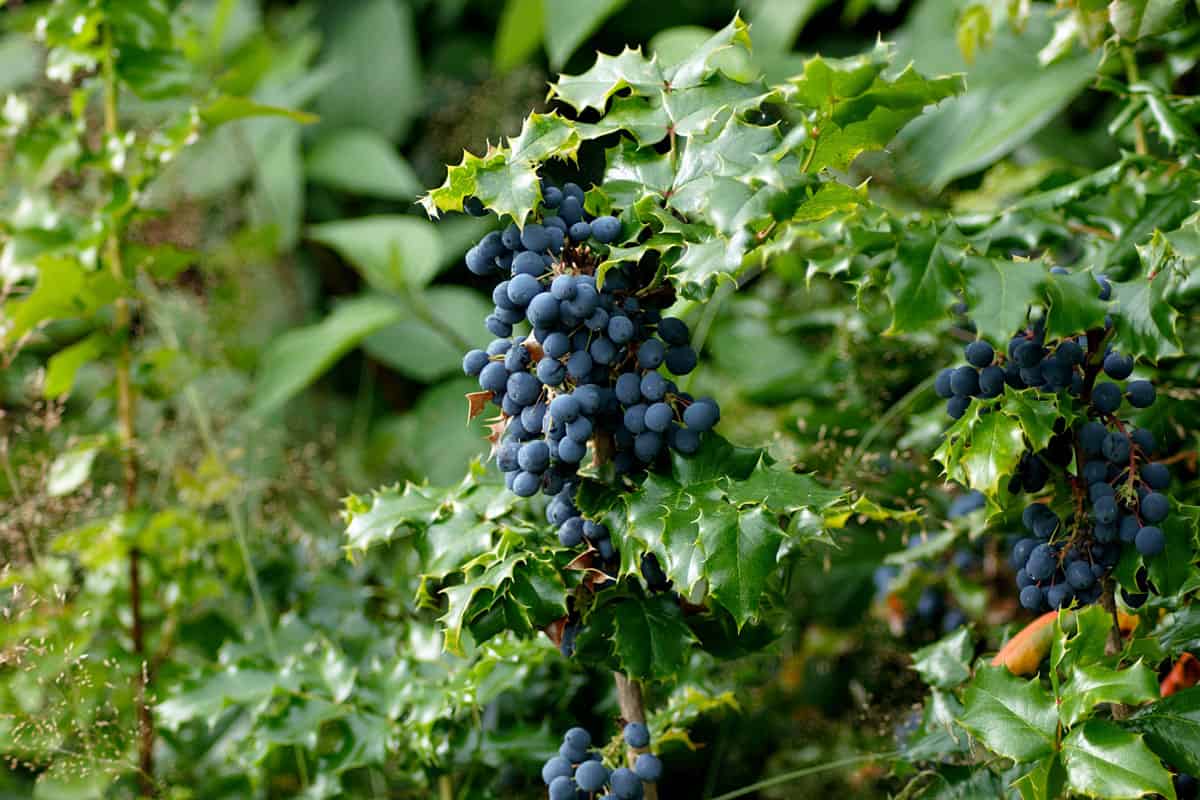
The Oregon grape is Oregon's state flower. If you want a shrub that requires minimum care, propagate it using cuttings or seeds. It will need mulch and fertilizer occasionally.
It produces a cluster of yellow blooms during late spring. Thus, it creates a focal point in containers, screens, or borders. Despite its name, its blue-black fruits are edible berries, not grapes.
- Height and Spread: 3 to 10 feet tall and 2 to 5 feet wide
- Soil Condition: fertile, moist, neutral, or alkaline
- Light Exposure: full and part shade
- USDA Hardiness Zones: 5 to 9
7. Red Tip Photinia (Photinia x fraseri)
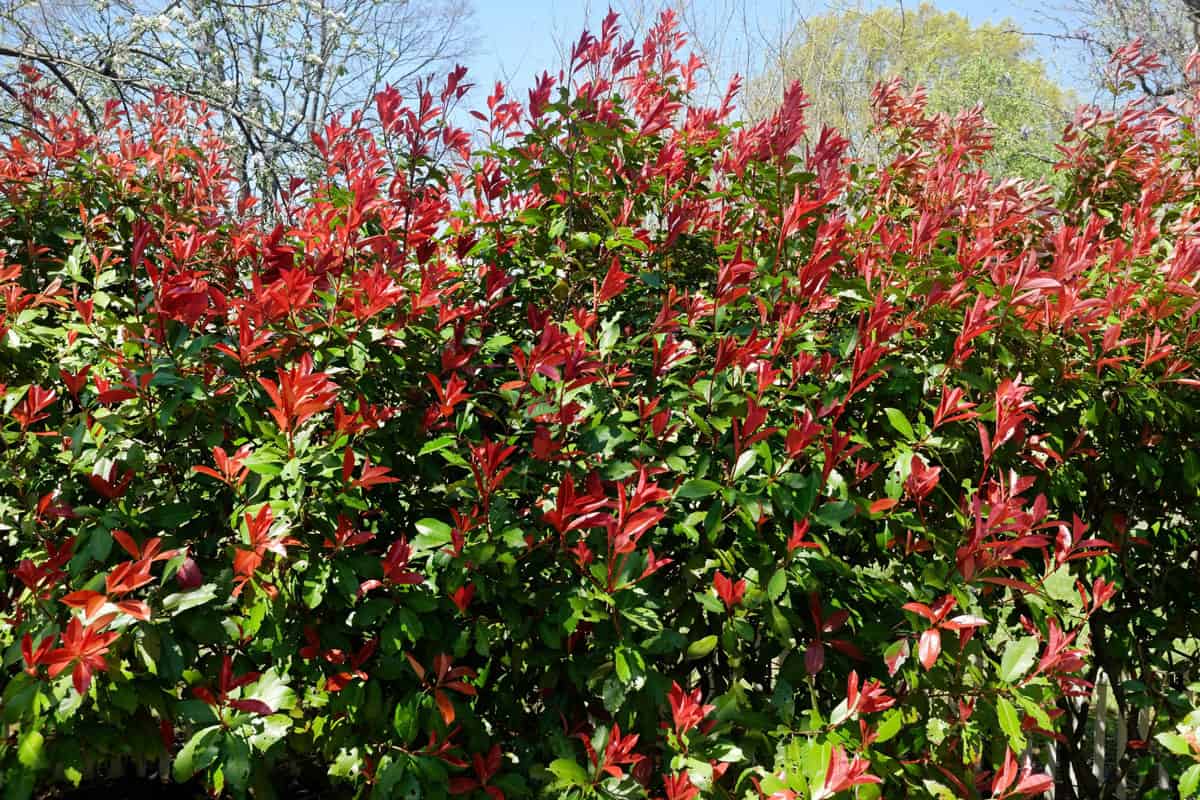
Photinia is best to cultivate in fall or spring. Likewise, pruning it every year promotes better airflow. It has red-green oval leaves as it matures. Meanwhile, it has bundles of white flowers towards the end of March.
However, it is susceptible to spots and holes because of excess water. Nonetheless, it remains a disease-free shrub in arid places like Texas and California.
- Height and Spread: 10 to 15 feet
- Soil Condition: neutral, loamy, moist
- Light Exposure: partial sun
- USDA Hardiness Zones: 7 to 9
Click here to see these photinia seedlings on Amazon.
8. Sasanqua camellia (Camellia sasanqua)
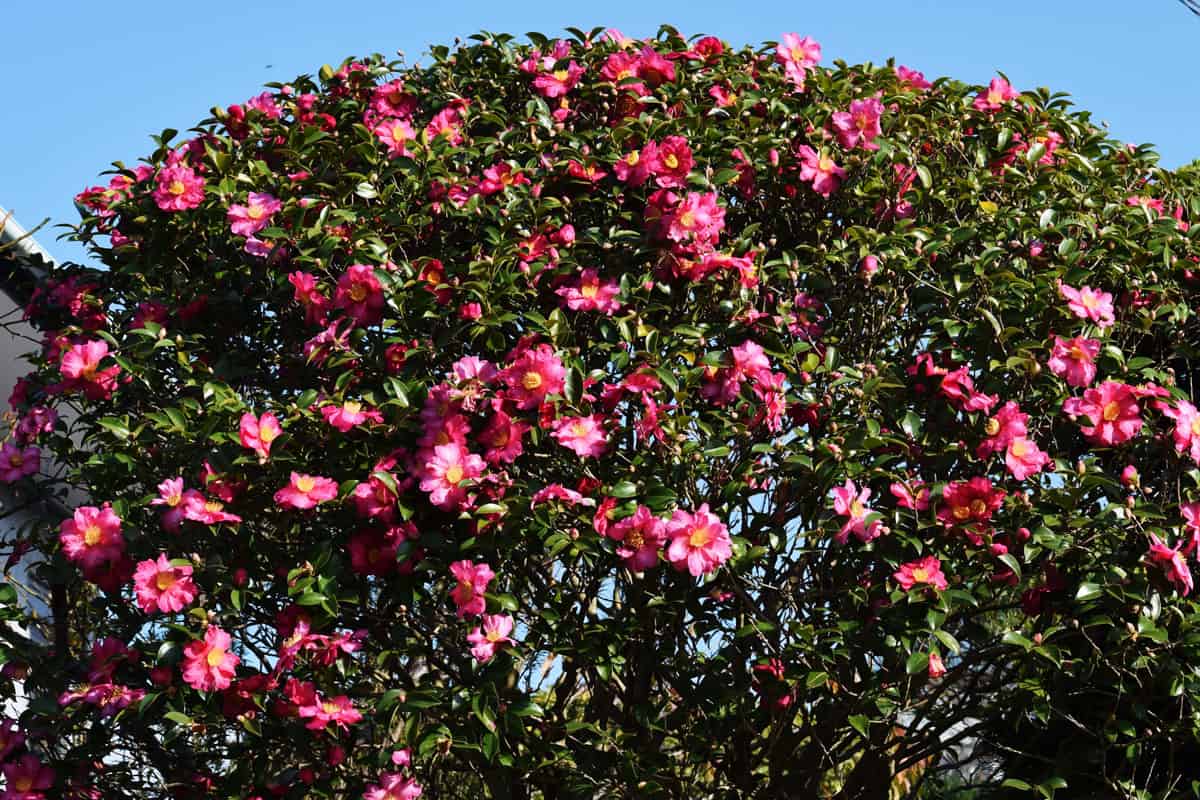
Even though camellia types are native to Japan and China, missionaries introduced them to other continents. Compared to the Japanese camellia, sasanqua has a steady growth. Moreover, you can opt for the hybrid of the two to enjoy their strengths.
As an accent to your landscape, the lovely white and pink blossoms have a pleasant smell from fall to winter. Meantime, the leaves are helpful for cooking and cosmetics.
- Height and Spread: 6 to 10 feet high and 5 to 7 feet thick
- Soil Condition: well-draining, rich, acidic
- Light Exposure: part shade or sun
- USDA Hardiness Zone: 7
9. Skyrocket Juniper (Juniperus scopulorum)
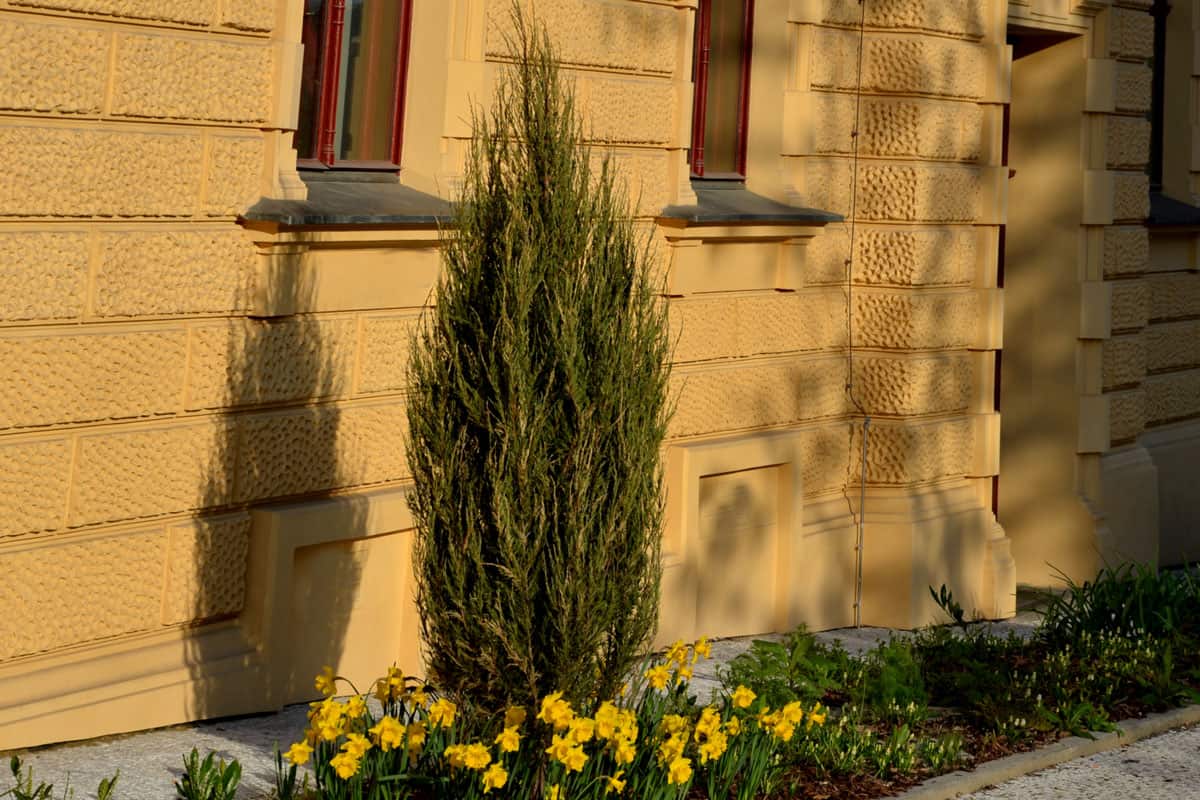
With blue-green foliage, this species is the most slender juniper. The spacing between the conifers must be at least 2 and 1/2 feet to propagate in a row. Then, apply mulch and fertilizer intermittently for optimal development. Similarly, you can plant bamboo alongside the narrow juniper.
- Height and Spread: 15 feet high and 3 to 4 feet thick
- Soil Condition: slightly acidic, moderately moist
- Light Exposure: full sun and part shade
- USDA Hardiness Zone: 4 to 9
Click here to see this skyrocket juniper sapling on Amazon.
10. Southern Wax Myrtle (Myrica cerifera)
Among the quick-growing shrubs on the list, wax myrtle or bayberry has a low-key green flowering. Although it is stable and disease-resistant, people can easily break its branches. In addition to the ornamental purpose, it comes in handy in candle-making and alternative medicine.
- Height and Spread: 15 to 25 feet high and 20 to 25 feet thick
- Soil Condition: flexible
- Light Exposure: any
- USDA Hardiness Zones: 7 to 10
11. Yellow Anise (Illicium parviflorum)
Also known as small or Ocala anise, it is a prominent plant in Florida. Raise anise as a hedge, or espalier with 36 to 60 inches spacing. Moreover, it resists infection and dryness. Its yellow-green flowers bloom in summer.
- Height and Spread: 15 to 20 feet high and 10 to 15 feet thick
- Soil Condition: clay or loam, acidic to neutral
- Light Exposure: part shade or sun
- USDA Hardiness Zones: 7 to 10
Click here to see this yellow anise sapling on Amazon.
What Is A Non-invasive Root?
Experts recommend plants with non-invasive root systems compared to invasive ones. This is mainly because of the problematic experiences with the latter.
Hence, choose a shrub with non-invasive or shallow roots as much as possible. It will free you from the burdens of protruding roots. They are less likely to spread and damage pavements, gutters, your home or neighbors' property.
Nonetheless, if non-invasive plants are unsuitable for the USDA zone or physical condition of the yard, they will try to conform to their situation. However, they will eventually grow aggressively because of the nutrient deficiency. For instance, a certain shrub cannot thrive without water for longer periods.
Can Shrubs Damage Foundations?

Regardless of size or appearance, shrubs with invasive roots are known for damaging houses' foundations. Shrubs that are too near (less than 10 feet) your house target the plumbings underneath your house because these roots want sources of water to meet their needs.
However, with the ever-changing technology, you can address the aggressive growth of these roots by installing root control around the shrubs before planting.
Click here to see this root barrier roll on Amazon.
Otherwise, you must avoid the following invasive shrubs:
- Autumn Olive
- Beach Vitex
- Common Buckthorn
- English Holly
- Heavenly Bamboo
- Honeysuckle
- Japanese Barberry
- Lantana
- Maybush
- Seven-sisters rose
- Wineberry
Why Are They Called As Evergreen?
Evergreen shrubs stay green while developing, but they will quickly turn brown upon trimming their leaves. These plants remain green because they can produce their food throughout the year.
Similarly, they have broad and lustrous leaves. For this reason, their leaf shape enables them to keep water in freezing temperatures without enough light.
Evergreens are under the category of perennials, similar to deciduous and semi-deciduous.
Evergreen Vs. Deciduous
Another type of perennial is deciduous, and its literal meaning is "fall off." The deciduous plants lose their leaves during winter dormancy, but their branches remain.
Evergreen Vs. Semi-deciduous
Unlike deciduous, these plants undergo partial shedding of leaves in winter or summer. This cycle shows how flexible trees can be.
Final Thoughts
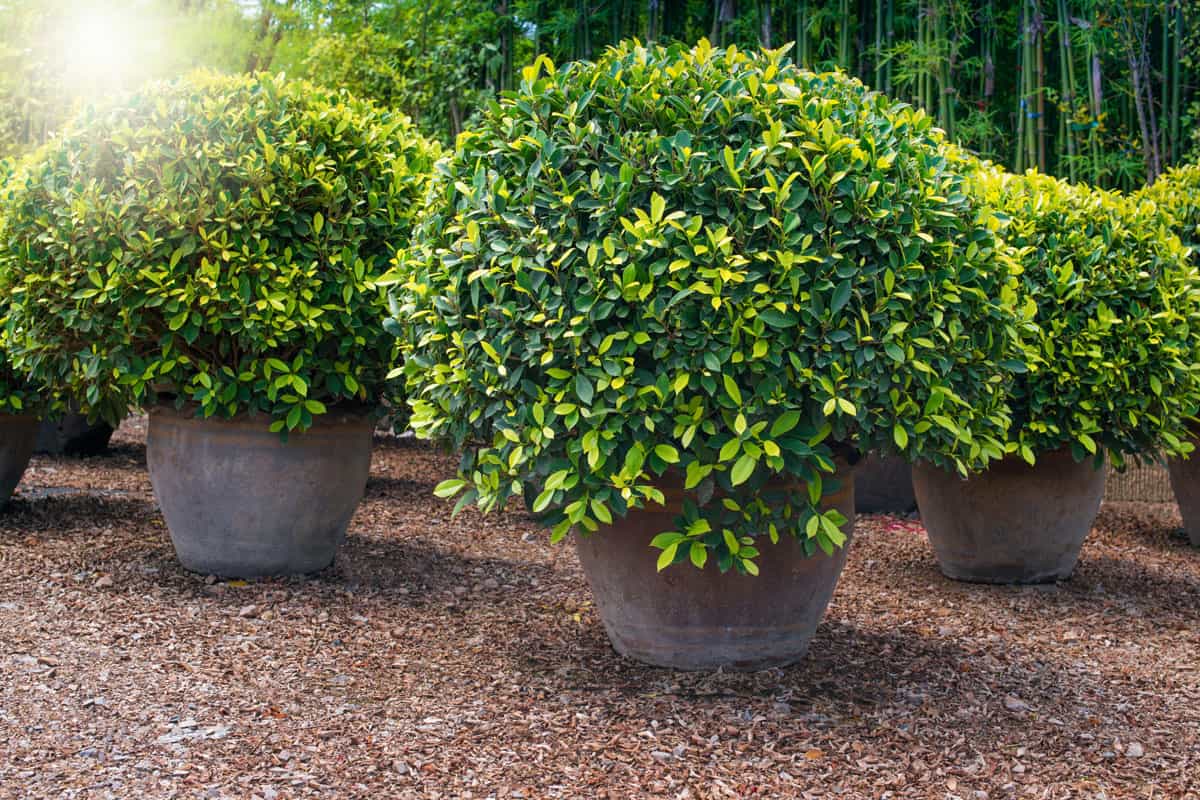
Whether stand-alone or in a group, shrubs that are evergreen and non-invasive will save you from time-consuming maintenance, costly replacements, and home safety hazards.
Nonetheless, you must meet the essential requirements for the best results, such as hardiness zones and soil and light preferences. Remember, knowledge is key to improving your landscape.
Thanks for reading! If you enjoyed this post, explore these articles about other trees:
15 Fruit Trees With Non-Invasive Roots
When To Transplant Evergreen Trees [And How To]
15 Low Maintenance Evergreen Shrubs For Your Garden
